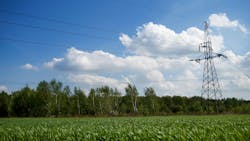Idaho Power Submits 2025 Long-Term Energy Plan to Address Growing Electricity Demand
Idaho Power has filed its 2025 Integrated Resource Plan (IRP) with regulators in Idaho and Oregon, outlining strategies for meeting projected increases in energy demand over the next two decades.
The plan includes proposals for expanding energy resources, transmission infrastructure, battery storage, and energy efficiency measures. Regulatory commissions in both states will now establish a timeline for public comment and review before determining whether to acknowledge the plan.
“The IRP is a really detailed analysis of how we are going to continue serving our customers with safe, reliable, affordable energy in a responsible way,” said Jared Hansen, Idaho Power Resource Planning Leader.
According to the utility, its preferred resource portfolio prioritizes cost-effectiveness and reliability, while also factoring in efforts to reduce wildfire risk. Forecasts included in the plan project nearly 45% growth in peak electricity demand — equivalent to 1,700 megawatts (MW) — by 2045, with almost 1,000 MW of that demand expected within the next five years. For comparison, the Brownlee hydropower plant, the company’s largest single energy resource, has less capacity than this anticipated near-term increase.
Company officials attribute the rising demand to both population growth and expansion in commercial and industrial activity. While large new customers are generally required to cover the costs of connecting to the grid, Idaho Power still must plan for how to integrate and supply these loads while maintaining overall grid performance.
“Our plan really highlights the work we are doing to identify resources that will provide safe, reliable energy for our customers at the lowest cost over the long term,” said Mitch Colburn, Vice President of Planning, Engineering, and Construction.
The IRP also calls attention to the need for additional high-voltage transmission infrastructure, including the Boardman to Hemingway and Southwest Intertie projects — both 500-kilovolt lines. These would support the company’s ability to import electricity during periods of high demand.
The development of the IRP involved input from the Integrated Resource Plan Advisory Council (IRPAC), a group of stakeholders that includes industrial customers, environmental advocates, representatives from the agricultural sector, elected officials, utility regulators, and others.
